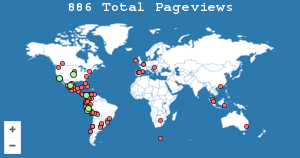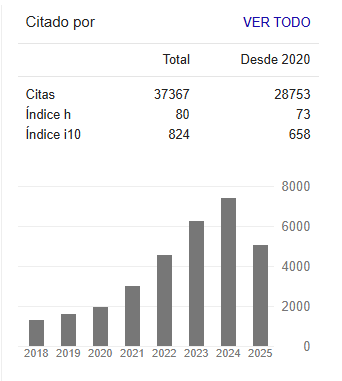Estimación de la brecha del producto: una revisión de desarrollos recientes y aplicación
Resumen
Este trabajo tiene por objetivo revisar dos nuevas herramientas que pueden ser utilizadas para obtener el output gap a través de desagregar la componente ciclo-tendencia del PIB. Se han evaluado el filtro de Hamilton (2018) y la transformada wavelet, comparando sus resultados respecto de los métodos tradicionales utilizados para estimar el output gap. Para este ejercicio se han aplicado los diferentes métodos a una serie simulada y luego una aplicación empírica al caso de Estados Unidos en el período 1957-2021. De las principales conclusiones de este trabajo, se puede mencionar las importantes diferencias en cuanto a las componentes cíclicas que se puede obtener por los diferentes métodos, que llama a la precaución por parte de los analistas en cuanto a considerar sólo un determinado método y el riesgo de cometer importantes errores de estimación. El análisis wavelet muestra gran versatilidad en cuanto a desagregar una serie temporal en componentes que pueden ser de gran utilidad para estudiar el output gap y otras componentes de interés, por lo que se recomienda profundizar en su uso en el ámbito del análisis macroeconómico.
Citas
Álvarez, L. J., & Gómez-Loscos, A. (2018). A menu on output gap estimation methods. Journal of Policy Modeling, 40(4), 827–850. https://doi.org/10.1016/j.jpolmod.2017.03.008
Barrales, J., & von Arnim, R. (2017). Longer-run distributive cycles: Wavelet decompositions for the US, 1948–2011. Review of Keynesian Economics, 5(2), 196–217. https://doi.org/10.4337/roke.2017.02.04
Baxter, M., & King, R. G. (1999). Measuring business cycles: Approximate band-pass filters for economic time series. Review of Economics and Statistics, 81(4), 575–593. https://doi.org/10.1162/003465399558454
Berger, T., Morley, J., & Wong, B. (2020). Nowcasting the output gap. Journal of Econometrics. https://doi.org/10.1016/j.jeconom.2020.08.011
Beveridge, S., & Nelson, C. R. (1981). A new approach to decomposition of economic time series into permanent and transitory components with particular attention to measurement of the “business cycle.” Journal of Monetary Economics, 7(2), 151–174. https://doi.org/10.1016/0304-3932(81)90040-4
Blanchard, O. J. (1989). A traditional interpretation of macroeconomic fluctuations. American Economic Review, 79(5), 1146–1164. https://doi.org/10.2307/1831442
Blanchard, O. J., & Quah, D. (1989). The dynamic effects of aggregate demand and supply disturbances. American Economic Review, 79(4), 655–673. https://doi.org/10.2307/1827924
Burns, A. F., & Mitchell, W. C. (1946). Measuring business cycles. NBER Books (Vol. I). Retrieved from http://econpapers.repec.org/bookchap/nbrnberbk/burn46-1.htm
Canova, F. (1998). Detrending and business cycle facts: A user’s guide. Journal of Monetary Economics, 41(3), 533–540. https://doi.org/10.1016/S0304-3932(98)00008-7
Champagne, J., Poulin-Bellisle, G., & Sekkel, R. (2018). The Real-Time Properties of the Bank of Canada’s Staff Output Gap Estimates. Journal of Money, Credit and Banking, 50(6), 1167–1188. https://doi.org/10.1111/jmcb.12493
Chen, W., & Netšunajev, A. (2016). On the long-run neutrality of demand shocks. Economics Letters, 139, 57–60. https://doi.org/10.1016/j.econlet.2015.11.039
Christiano, L. J., & Fitzgerald, T. J. (2003). The Band Pass Filter*. International Economic Review, 44(2), 435–465. https://doi.org/10.1111/1468-2354.t01-1-00076
Cochrane, J. H. (1994). Permanent and Transitory Components of GNP and Stock Prices. The Quarterly Journal of Economics, 109(1), 241–265. https://doi.org/10.2307/2118434
Cogley, T., & Nason, J. M. (1995). Effects of the Hodrick-Prescott filter on trend and difference stationary time series Implications for business cycle research. Journal of Economic Dynamics and Control, 19(1–2), 253–278. https://doi.org/10.1016/0165-1889(93)00781-X
Conway, P., & Frame, D. (2000). A spectral analysis of New Zealand output gaps using Fourier and wavelet techniques. Reserve Bank of New Zealand.
Crowley, P. M. (2007). A guide to wavelets for economists. Journal of Economic Surveys, 21(2), 207–267. https://doi.org/10.1111/j.1467-6419.2006.00502.x
Crowley, P. M., & Hudgins, D. (2021). Is the Taylor rule optimal? Evaluation using a wavelet-based control model. Applied Economics Letters, 28(1), 54–60. https://doi.org/10.1080/13504851.2020.1730752
Debnath, L. (2002). Multiresolution Analysis and Construction of Wavelets. In Wavelet Transforms and Their Applications (pp. 403–474). Birkhäuser Boston. https://doi.org/10.1007/978-1-4612-0097-0_7
FRED | St. Louis Fed. (2021). Real Gross Domestic Product. Retrieved May 15, 2021, from https://fred.stlouisfed.org/series/GDPC1
Gao, R. X., & Yan, R. (2011). Wavelets: Theory and applications for manufacturing. Wavelets: Theory and Applications for Manufacturing. https://doi.org/10.1007/978-1-4419-1545-0
Hamilton, J. D. (2018). Why You Should Never Use the HP Filter. The Review of Economic and Statistic, 100(5), 831–843. https://doi.org/10.3386/w23429
Hodrick, R. (2020). An Exploration of Trend-Cycle Decomposition Methodologies in Simulated Data (Working Paper No. 26750). National Bureau of Economic Research. Cambridge, MA. https://doi.org/10.3386/w26750
Hodrick, R., & Prescott, E. (1997). Postwar U .S. Business Cycles : An Empirical Investigation. Journal of Money, Credit and Banking, 29(1), 1–16.
Jahan, S., & Mahmud, A. (2013). What Is the Output Gap? - Back to Basics - Finance & Development, September 2013. Retrieved June 2, 2022, from https://www.imf.org/external/pubs/ft/fandd/2013/09/basics.htm
Jönsson, K. (2020a). Cyclical Dynamics and Trend/Cycle Definitions: Comparing the HP and Hamilton Filters. Journal of Business Cycle Research, 16(2), 151–162. https://doi.org/10.1007/s41549-020-00039-x
Jönsson, K. (2020b). Real-time US GDP gap properties using Hamilton’s regression-based filter. Empirical Economics, 59(1), 307–314. https://doi.org/10.1007/s00181-019-01631-6
Kim, C. J., & Kim, J. (2020). Trend-cycle decompositions of real gdp revisited: Classical and Bayesian perspectives on an unsolved puzzle. Macroeconomic Dynamics, 1–25. https://doi.org/10.1017/S1365100520000218
Luvsannyam, D., Batmunkh, K., & Buyankhishig, K. (2019). Dating the business cycle: Evidence from Mongolia. Central Bank Review, 19(2), 59–66. https://doi.org/10.1016/j.cbrev.2019.06.001
Mallat, S. G. (1989). A theory for multiresolution signal decomposition: the wavelet representation. IEEE Transactions on Pattern Analysis and Machine Intelligence, 11(7), 674–693. https://doi.org/10.1109/34.192463
Mitra, S., Maheswari, V., & Mitra, A. (2011). A wavelet filtering based estimation of output gap. Applied Mathematics and Computation, 218(7), 3710–3722. https://doi.org/10.1016/j.amc.2011.09.013
Mondaca-Marino, C. M., & Rojas-Mora, J. C. (2017). ¿Es diferente el ciclo económico de la Región de Magallanes respecto del ciclo económico nacional? Magallania, 45(2), 151–164. https://doi.org/10.4067/S0718-22442017000200151
Morley, J., & Wong, B. (2020). Estimating and accounting for the output gap with large Bayesian vector autoregressions. Journal of Applied Econometrics, 35(1), 1–18. https://doi.org/10.1002/jae.2733
Murray, C. J. (2003). Cyclical properties of Baxter-king filtered time series. Review of Economics and Statistics, 85(2), 472–476.
Orphanides, A., Porter, R. D., Reifschneider, D., Tetlow, R., & Finan, F. (2000). Errors in the measurement of the output gap and the design of monetary policy. Journal of Economics and Business, 52(1–2), 117–141. https://doi.org/10.1016/s0148-6195(99)00031-4
Percival, D. B., & Walden, A. T. (2000). Wavelet methods for time series analysis. Cambridge University Press.
Perron, P., & Wada, T. (2009). Let’s take a break: Trends and cycles in US real GDP. Journal of Monetary Economics, 56(6), 749–765. https://doi.org/10.1016/j.jmoneco.2009.08.001
Pollock, D. S. G. (2000). Trend estimation and de-trending via rational square-wave filters. Journal of Econometrics, 99(2), 317–334. https://doi.org/10.1016/S0304-4076(00)00028-2
Quast, J., & Wolters, M. H. (2020). Reliable Real-Time Output Gap Estimates Based on a Modified Hamilton Filter. Journal of Business and Economic Statistics. https://doi.org/10.1080/07350015.2020.1784747
Ramsey, J. B. (2002). Wavelets in economics and finance: Past and future. Studies in Nonlinear Dynamics and Econometrics. https://doi.org/10.2202/1558-3708.1090
Rhif, M., Ben Abbes, A., Farah, I., Martínez, B., & Sang, Y. (2019). Wavelet Transform Application for/in Non-Stationary Time-Series Analysis: A Review. Applied Sciences, 9(7), 1345. https://doi.org/10.3390/app9071345
Schüler, Y. S. (2018). On the cyclical properties of Hamilton‘s regression filter. http://www.bundesbank.de
Sun, C., & Li, N. (2022). Extracting business cycles with three filters: A comparative study and application in the case of China. Bulletin of Economic Research. https://doi.org/10.1111/boer.12344
Tiwari, A. K., Olayeni, O. R., Sherafatian-Jahromi, R., & Adejonwo, O. S. (2019). Output Gap, Money Growth and Interest Rate in Japan: Evidence from Wavelet Analysis. Arthaniti: Journal of Economic Theory and Practice, 18(2), 171–184. https://doi.org/10.1177/0976747918800847
Verona, F. (2016). Time-frequency characterization of the U.S. Financial cycle. Economics Letters, 144, 75–79. https://doi.org/10.1016/j.econlet.2016.04.024
Zarnowitz, V., & Ozyildirim, A. (2006). Time series decomposition and measurement of business cycles, trends and growth cycles. Journal of Monetary Economics, 53(7), 1717–1739. https://doi.org/10.1016/j.jmoneco.2005.03.015

Esta obra está bajo licencia internacional Creative Commons Reconocimiento-NoComercial-CompartirIgual 4.0.








.png)






























